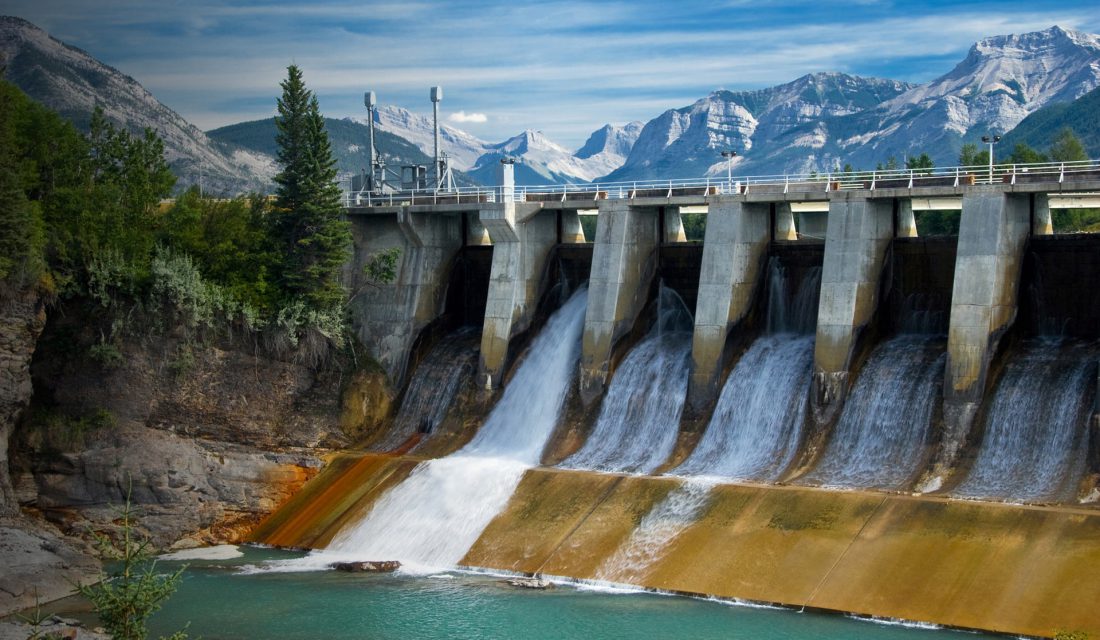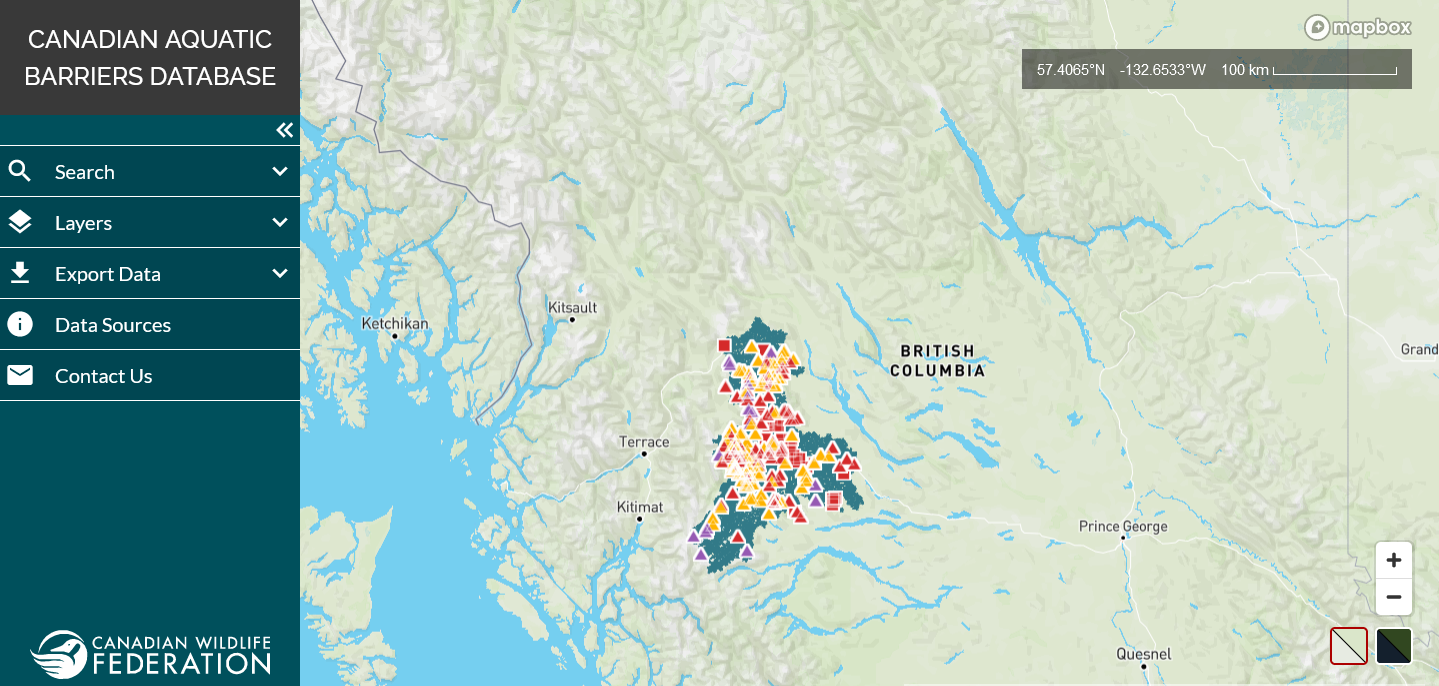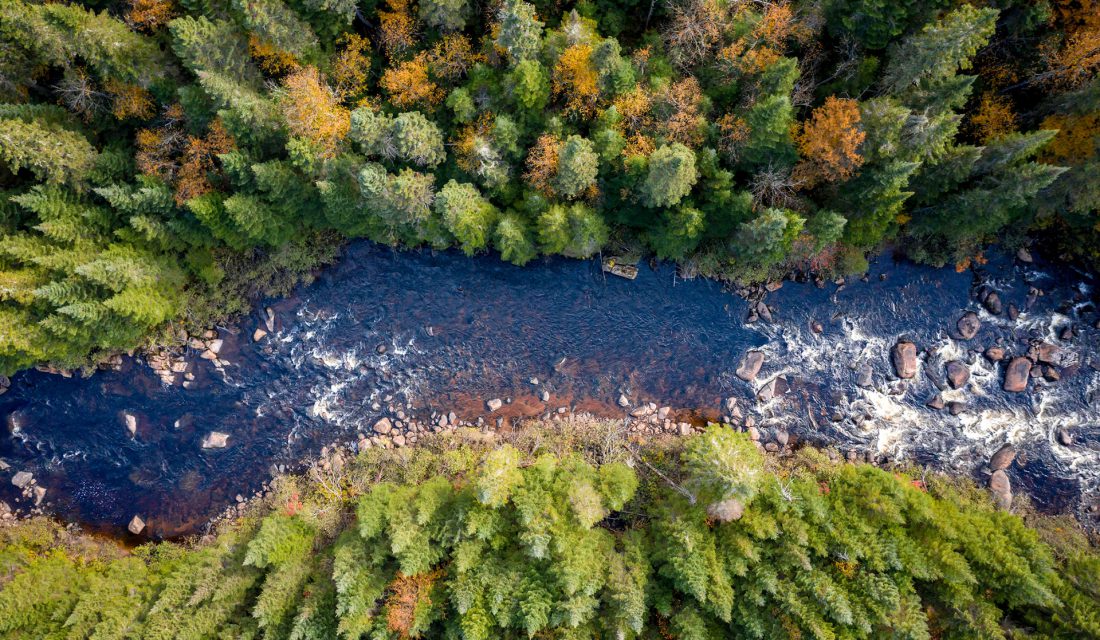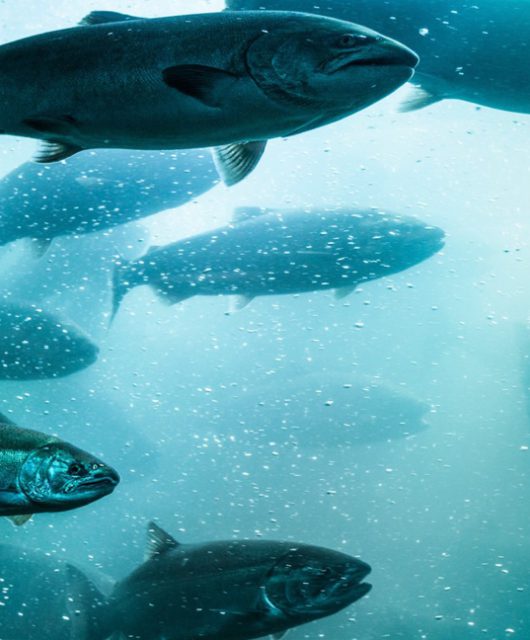The Canadian Wildlife Federation is pleased to announce the public launch of the Canadian Aquatic Barriers Database (CABD)!
The launch of the CABD web tool invites users to explore barrier and hydrographic data directly through their browser – no extra software required. Currently, data is available for Alberta, Atlantic Canada (NB, NL, NS, PEI), and seven additional regions across the country, and additional data is scheduled for release on a monthly basis until national coverage is complete in summer 2022.
The Canadian Aquatic Barriers Database is a multi-year project that is supported partially by financial contributions from Fisheries and Oceans Canada and the RBC Foundation.
What is the CABD?
 The CABD is a standardized repository of barriers to aquatic connectivity across Canada that will support large-scale policy and reporting work, restoration planning and prioritization, infrastructure asset management, research and monitoring programs, and education and public outreach initiatives.
The CABD is a standardized repository of barriers to aquatic connectivity across Canada that will support large-scale policy and reporting work, restoration planning and prioritization, infrastructure asset management, research and monitoring programs, and education and public outreach initiatives.
Currently, the CABD offers four types of data:
- Dams
- Waterfalls
- Fishways
- Hydrographic (stream and river) networks.
The goal of the CABD is provide a curated, central, and open source for barrier and connectivity data in Canada, by compiling existing and acquirable datasets, filling data gaps across the country, and sharing data updates back to providers, where possible. As the CABD develops, users will be able to access all the barrier and connectivity information they need in one place, rather than having to track down and compile multiple sources on their own – saving valuable time and resources. In addition to the four current barrier types, we plan to begin compiling stream crossing barrier data across Canada in 2022. Visit our website to learn more about the project.
How can you access the CABD?

The web tool can be accessed at aquaticbarriers.ca through any browser. As part of our “sneak peek” launch, the tool is currently only available in English, but we will be releasing a French version this winter.
Through the web mapping interface, you can:
- Explore barrier and hydrographic data
- Toggle between a standard basemap and satellite imagery
- Click on barrier and fishway points to explore their attributes
- Turn layers on and off
- Download the barrier and fishway data in CSV format
- View the datasets used (so far) to compile the CABD
For more details on how to use the CABD web tool, check out our FAQs, simplified data dictionary or contact us.
How was the CABD developed?
 CWF engaged extensively with potential users across Canada in a variety of sectors and fields of work, including all levels of government, NGOs, local and community groups, and industry. The engagement process helped us answer key questions about the value of a national database for barriers to aquatic connectivity.
CWF engaged extensively with potential users across Canada in a variety of sectors and fields of work, including all levels of government, NGOs, local and community groups, and industry. The engagement process helped us answer key questions about the value of a national database for barriers to aquatic connectivity.
CWF is currently in Phase 1 of the project, where we are working to collect and standardize existing barrier datasets into a single database. This is done by accessing openly available datasets or establishing reciprocal data-sharing agreements with data providers. To date, we have compiled over 30 dam, waterfall, and fishway datasets. CWF technicians review each barrier to remove duplicates, improve location accuracy, and assign attributes from multiple sources to a single CABD point. A full list of data sources can be viewed by clicking on the ‘Data Sources’ tab in the web tool.
The hydrographic networks contain data for streams, rivers, and lakes derived from the National Hydro Network (NHN). Building on open-source software created by Natural Resources Canada, CWF has continued development of the Common Hydrology Features (CHyF) tools and services to create clean, connected, and analysis-ready networks to support connectivity and hydrological modelling. While the hydrographic networks are not yet downloadable through the web tool, if you are interested in accessing the data, you can contact us.
The CABD makes data available through the open-source CC BY-NC-SA 4.0 license.
What comes next?
We are always processing new data, but currently the CABD contains:
- Over 30,000 dams
- Over 10,000 waterfalls
- Over 400 fishways
In addition to releasing the remaining dam, waterfall, fishway, and hydrography data over the coming months, there are a few key steps we are working on:
Expand the filter and download capabilities in the web tool
By spring 2022, users will be able to filter barrier data by an expanded set of attributes and visualize and download filtered data. We are also working on adding the ability to download the hydrographic data through the web tool and adding additional download formats, including shapefile, geopackage, and KML.
Start Phase 2 of CABD population
You may notice that many barrier points in the CABD currently have blank or ‘Unknown’ values for many attributes. This is due to two reasons:
- The set of attributes for dams, waterfalls, and fishways were developed through the engagement process to be an “aspirational” list of the information that users would find valuable for each barrier, recognizing that some attributes will need to be filled in over time.
- The current attributes available for each barrier is limited to those that are found in the source datasets. If specific information on a barrier does not currently exist in another data source, then it will not be captured in the CABD.
This is where Phase 2 comes in! Once we have compiled and released all existing barrier data, we will continue engagement and ask for help to fill in attributes and identify barriers that we are currently missing in the CABD. Anyone can help fill in data gaps in the CABD – if you know of an existing barrier dataset or single point that we don’t have yet or have attribute information for existing barriers, please reach out to us and we can work together to update the CABD.
Create an Aquatic Connectivity Toolbox
In subsequent years, we plan to compile existing tools, resources, and best practices in the field of aquatic connectivity to form a toolbox to support users and practitioners in their work. This will include compiling barrier remediation success stories to inspire and inform future projects.




